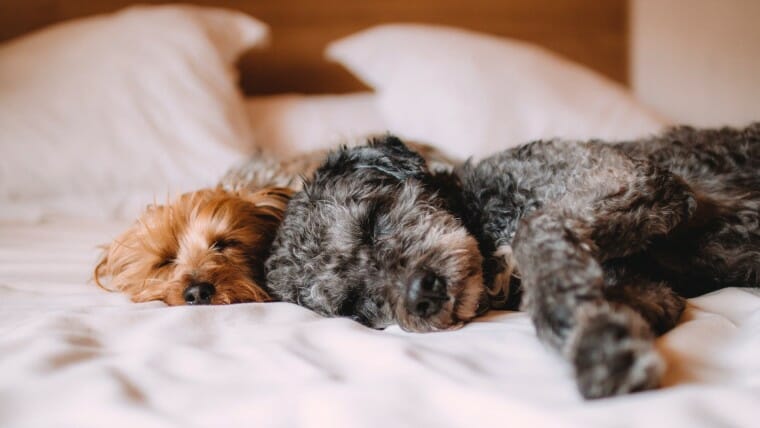Finding Peace in Parting: Managing Separation Anxiety in Dogs
At Puppy Play and Stay we understand leaving your beloved furry friend behind, whether for a few hours at daycare or a longer stay at a boarding facility, can be an emotional experience for both you and your canine companion. Dogs, being highly social animals, often struggle with the concept of being apart from their human family members. This can manifest as separation anxiety, a condition characterized by excessive distress when left alone. However, with the right approach and understanding, it is possible to alleviate the symptoms of separation anxiety and ensure a positive experience for your dog while they are in daycare or boarding.
Understanding Separation Anxiety
Separation anxiety in dogs can stem from various factors, including past experiences, lack of socialization, changes in routine, or simply a strong attachment to their owners. Common signs of separation anxiety include excessive barking or howling, destructive behavior, pacing, drooling, and attempts to escape. It’s essential to recognize these signs and address them proactively to prevent further distress for your furry friend.
Causes of Separation Anxiety
- Past Trauma: Dogs who have experienced abandonment or neglect in the past may develop separation anxiety as a result of their fear of being left alone again.
- Lack of Socialization: Dogs who have not been adequately socialized with other animals or people may feel anxious when separated from their primary caregiver.
- Changes in Routine: Any significant changes in a dog’s routine, such as moving to a new home or a change in work schedule, can trigger separation anxiety.
- Strong Attachment: Dogs who have a particularly strong bond with their owners may struggle more with being apart from them.
Tips for Dogs
- Gradual Desensitization: Gradually acclimate your dog to being alone by leaving them for short periods and gradually increasing the duration over time. This helps build their confidence and reduces anxiety.
- Create a Safe Space: Provide your dog with a comfortable and familiar environment, such as their bed or crate, stocked with their favorite toys and blankets. This can serve as a reassuring sanctuary in your absence.
- Positive Reinforcement: Reward calm behavior with treats and praise to reinforce positive associations with alone time. This helps your dog understand that being alone is not a negative experience.
- Exercise and Mental Stimulation: Ensure your dog receives plenty of physical exercise and mental stimulation before leaving them alone. A tired dog is less likely to experience anxiety and may rest more peacefully in your absence.
- Consider Professional Help: If your dog’s separation anxiety is severe or persistent, consider seeking guidance from a professional dog trainer or behaviorist who can provide tailored advice and support.
Tips for Owners
- Establish a Routine: Maintain a consistent daily routine for your dog, including feeding times, walks, and play sessions. Predictability can help alleviate anxiety by providing a sense of security.
- Stay Calm and Confident: Dogs are highly attuned to their owners’ emotions, so remain calm and confident when leaving or returning home. Avoid making a fuss over departures or arrivals, as this can inadvertently reinforce anxious behavior.
- Practice Short Absences: Gradually increase the duration of your absences, starting with short periods and gradually extending them over time. This helps your dog learn that you will always return.
- Provide Distractions: Leave interactive toys or puzzle feeders for your dog to enjoy while you’re away. This can help keep their mind occupied and reduce anxiety.
- Seek Support: Don’t hesitate to reach out to friends, family, or support groups for emotional support during this challenging time. Sharing your experiences and seeking advice from others who have dealt with separation anxiety can be incredibly helpful.
By implementing these tips for both dogs and owners, you can help alleviate separation anxiety and ensure a positive experience for your furry friend in daycare or boarding. Remember, patience and consistency are key, and with time, your dog can learn to feel more comfortable and secure when apart from you.


